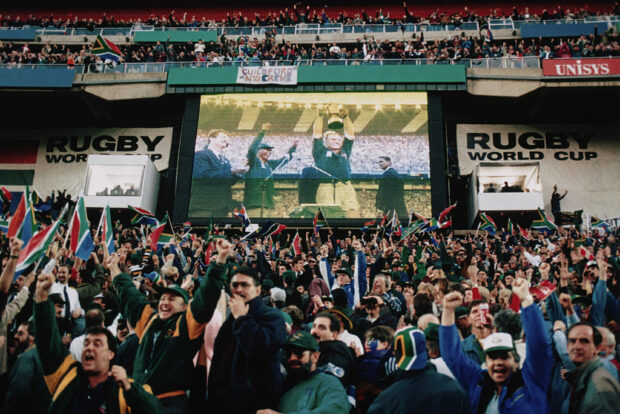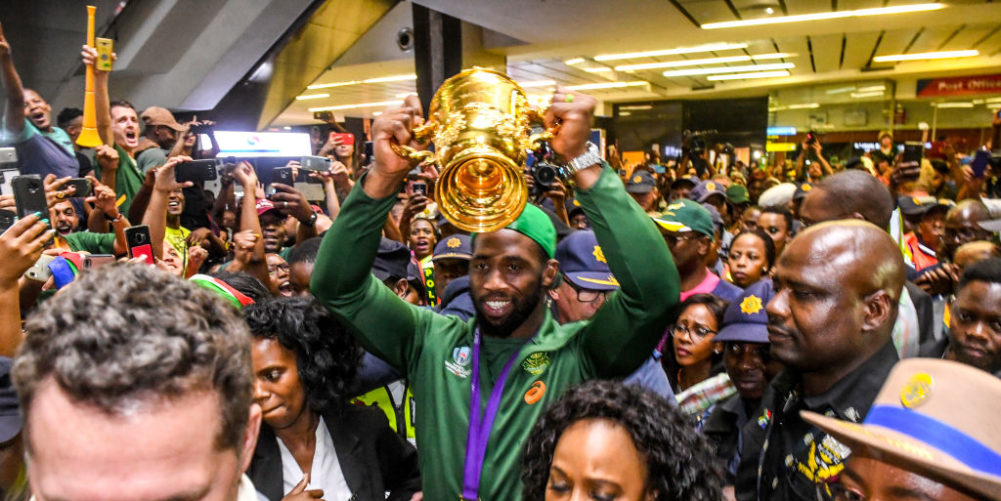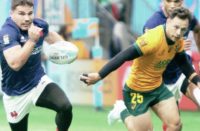Everybody recognises the power of the shirt, the passion and pride behind a nation's national colours and jersey that has been handed down through the decades. But never has the number of a shirt held such significance as it does for South Africa. And of course that number is six.
On Saturday, Siya Kolisi was the man filling that shirt and what an impressive captain and indeed man, the classy flanker from Port Elizabeth is. Meanwhile on the touchline South Africa's President Cyril Ramaphosa was, of course, decked out in a number six jersey, as were Kolisi's children and wife.
All of this of course deliberately recalls, and takes inspiration from, the events of June 24 1995. On that day Francois Piennar – up in the stands chugging away happily at a few beers at the final – wore six and lifted the World Cup trophy which was presented to him by President Nelson Mandela who had also chosen that day to show solidarity with his white captain and wear his shirt.
This from the man who had spent decades incarcerated by the rugby- loving white supremacists who ran South Africa back in the bad old days.
It was a ‘moment' that modern day South Africa cherishes and turns to in times of stress. Things still aren't easy in that most beautiful of troubled nations, the challenges are immense, but it's a reference point everybody can return to.
So the very fact that Kolisi– who like all South African openside flankers wears six not seven – was appointed as the first black Springboks captain last year was massive in itself, a seminal moment that gave real credence to the notion that rugby is now truly multi-racial in South African.
But then to lift the World Cup by beating favourites England is frankly off the Richter scale. This time it was Ramaphosa not Mandela shaking his fists in triumph doing the honours, the picture that the entire sporting world will be waking up to this morning.
In many ways the last Saturday was the direct result of that win by Pienaar's team even if it has taken 24 years for the full effect to percolate through. In the history of a nation that's not long but if you are an impatient black rugby player trying to break through it must have seemed an eternity.

Back in 1995 we had the magic of Mandela and his unlikely adoption of the Springboks and the fairy-tale story of the late Chester Williams being called back into the squad after injury to take a starring role in the knock out stages. But frankly that gave the rather, false, if welcome impression that rugby in the country was multi-racial.
It wasn't although there were hints of better times around the corner. Williams, as he admitted in his autobiography, was still often shunned by some members of the white South African teams he represented when he was often the only player of colour.
Playing quotas had to be brought in and in such an alpha male sport as rugby that didn't sit well with some and in fairness that wasn't necessarily simply down to subconscious racism.
An important tenant of sport is that the best man or woman should always be selected regardless, and the argument went that if you ‘give away' Springbok caps it undermines the team, weakens it, and causes resentment.
Such stunted thinking had to be quickly overturned. The world was moving on and South African rugby was lagging badly behind.
The black and coloured rugby playing communities – which have always existed in considerable numbers – needed heroes and role models from their own communities so that they, too, could dream of wearing the jersey. Their national jersey. They had been ignored or shut out for too long. And that would take a little time and involved the gnashing of teeth in some quarters.
To achieve long term equality there had to be a little proactive tinkering with the system but that was a minuscule price to pay given the massive potential rewards – an even stronger, broader-based South African team, and even more importantly, a more united and cohesive society.
When South Africa won the 2007 World Cup, they fielded two players of colour – the two fliers out wide Bryan Habana and JP Pietersen. Yesterday the Boks starting fifteen was packed with six brilliant players of colour. Match winners, inspiring skippers, fleet-footed try scorers, heroes, world cup winners. Mighty Springboks and South Africans by any criteria.
Cheslin Kolbe (a distant cousin of 400m world record holder Wade van Niekerk), Lukhanyo Am, Makazole Mapimpi, Bongi Mbonambi, Tendai Mtawarira who arrived as a flanker from across the border in Zimbabwe and of course the skipper himself. And there were another six players of colour in the World Cup squad including another speed merchant S'busiso Nkosi who might just be the best of the lot.
Kolisi and Mapimpi both come from impoverished backgrounds in the Eastern Cape which has always been a stronghold for black rugby players. As Kolisi has so eloquently put it this week when he was young he dreamed of his next meal not winning the World Cup.
That Eastern Cape background is important and it was noticeable that the most riotous scenes of celebration came from the huge, largely black crowd gathered in front of the big screen in Port Elizabeth.
Freedom fighter Steve Beko – who received the Hollywood treatment in the Dickie Attenborough film Beko – was a fine blindside flanker at club level in the Eastern Cape before he was arrested and died while in police detention.
Yet another No.6 from the Eastern Cape – Morgan Cushe – should have been the first black player to represent the Boks. He was the best flanker the 1974 Lions met around the Provinces. His path though was blocked. Right player, wrong time.
Siya Kolisi in contrast, is the right player at the right time and all of rugby, even disappointed England supporters, will share his joy.


























